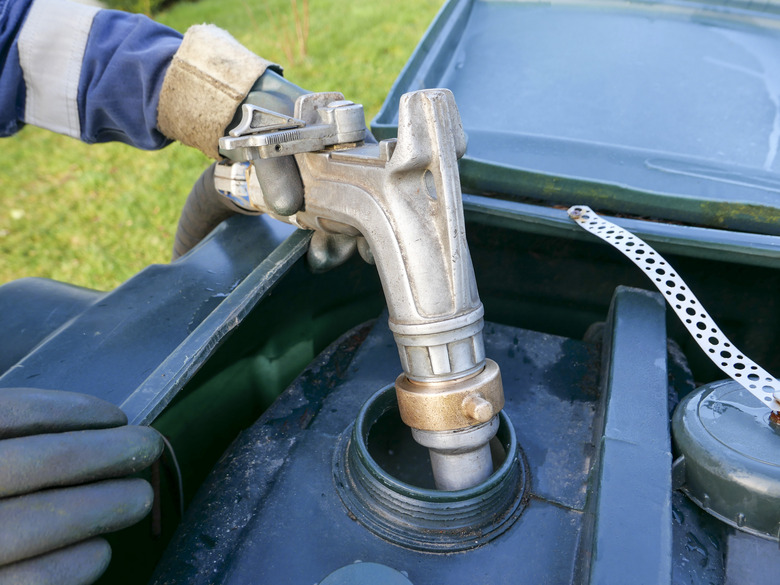How To Manually Check The Heating Oil Level In An Oil Tank
We may receive a commission on purchases made from links.
When winter weather approaches, it's a good idea to check and see how much heating oil is in your tank. You don't want to run out of oil in the middle of a cold night or when snowy weather could prevent you from getting a prompt refill. Most tanks contain a gauge that tells you how much oil is left in the tank, but these gauges don't always age well. Some are hard to read, and others can malfunction. Fortunately, a manual check will tell you how much oil you have and can verify whether or not your gauge is working.
Gauges: The Good and the Bad
Gauges: The Good and the Bad
Most heating oil tanks have a gauge on the top. This gauge is a small cylinder that tells you how much oil is left in your tank. The float inside this gauge rises and falls with your oil levels.
When using this gauge, remember that oil tank gauges are similar to the gas gauge on your car. The gauge won't tell you how many gallons of oil remain, but it will tell you what percentage of the oil tank is full. If the gauge sits at the halfway mark, for example, it's telling you that the tank is 50 percent full. Working gauges can make it quite easy to see how much oil you have, but it's important to take their readings with a grain of salt.
Why? For one, they can prove very difficult to read. Many are encased in a plastic sleeve that gets dirty and may yellow over time. This can make the gauge cover translucent or outright opaque, making the gauge hard to read. Note too that float arms can wear or get stuck, both of which render your gauge inaccurate. An oil buildup on the float can also alter its buoyancy.
Testing Your Gauge
Testing Your Gauge
Before relying too heavily on your oil tank's gauge, you may wish to test it. There are two simple ways to do this, but one — while possible in theory — can prove far more difficult than it should in reality. This method involves pushing the float down manually.
To do so, note the current reading on your gauge. Next, remove the plastic cover over your oil gauge by twisting it off like a jar lid. You can now access the float, which you will push down gently. You may meet some resistance, but this is OK and simply means you're pushing the float into the oil. You should not, however, have to force the gauge.
If the gauge is working, it will drift back up to where it was before you pushed it down in a few seconds. If it stays down or comes back up to the wrong place, it's probably broken. That may not seem difficult, but the catch is that the plastic covers on many heating oil gauges are quite old. If you can't get the cover to twist off, abandon the project and use the other test method. Don't use pliers or other tools to grip the last gauge housing, as these will likely break it.
Rather than fighting with your gauge cover, another way to check gauge accuracy is to simply wait until your next oil delivery. When the oil truck leaves your home, the tank should indicate that your heating oil tank is full. If it doesn't, there is probably an issue.
Manually Checking Your Oil Level
Manually Checking Your Oil Level
If you know your gauge is a dud, it's easy to check your oil levels manually. All you need is a clean rod or yardstick to serve as a dipstick. As long as it is long enough to reach the bottom of your oil tank, you're good to go.
- Open your oil tank by removing the fill cap. Rotate it counterclockwise to open it.
- Lower your dipstick into the tank until it rests against the bottom.
- Pull the stick straight out of the tank and measure the depth of the oil in inches.
- Consult an online oil level chart to determine how many gallons of oil are in your tank.
There are tons of these available for free online. Simply find the chart for your oil tank size. Then, follow the chart down to the oil depth you measured and read the corresponding gallons column. - Check the oil tank about once a week until you get a feel for how quickly you use your oil.
